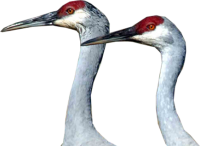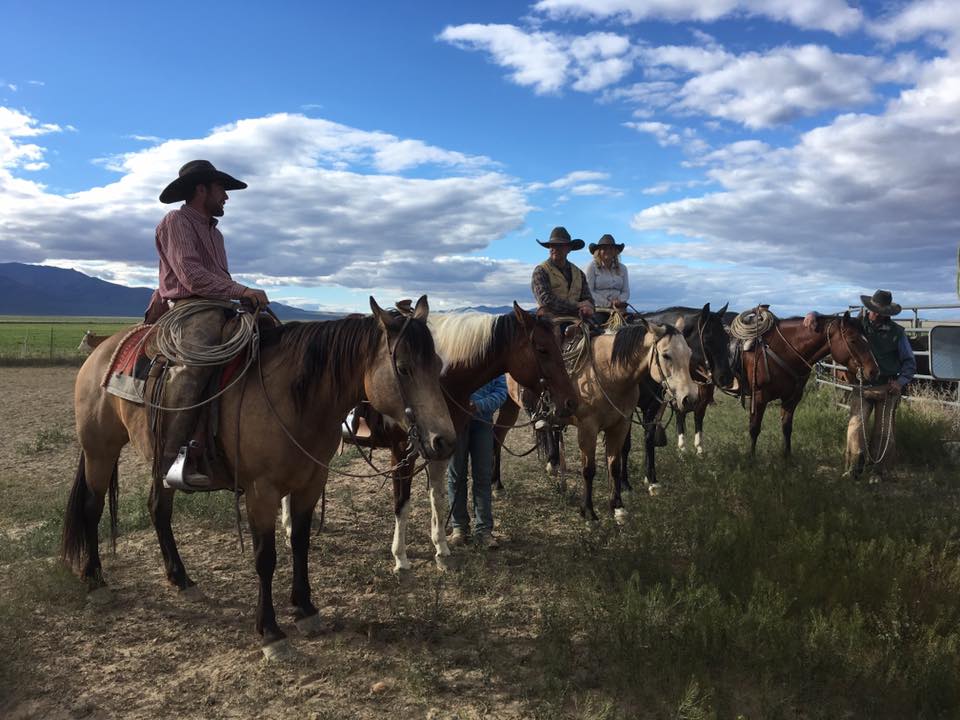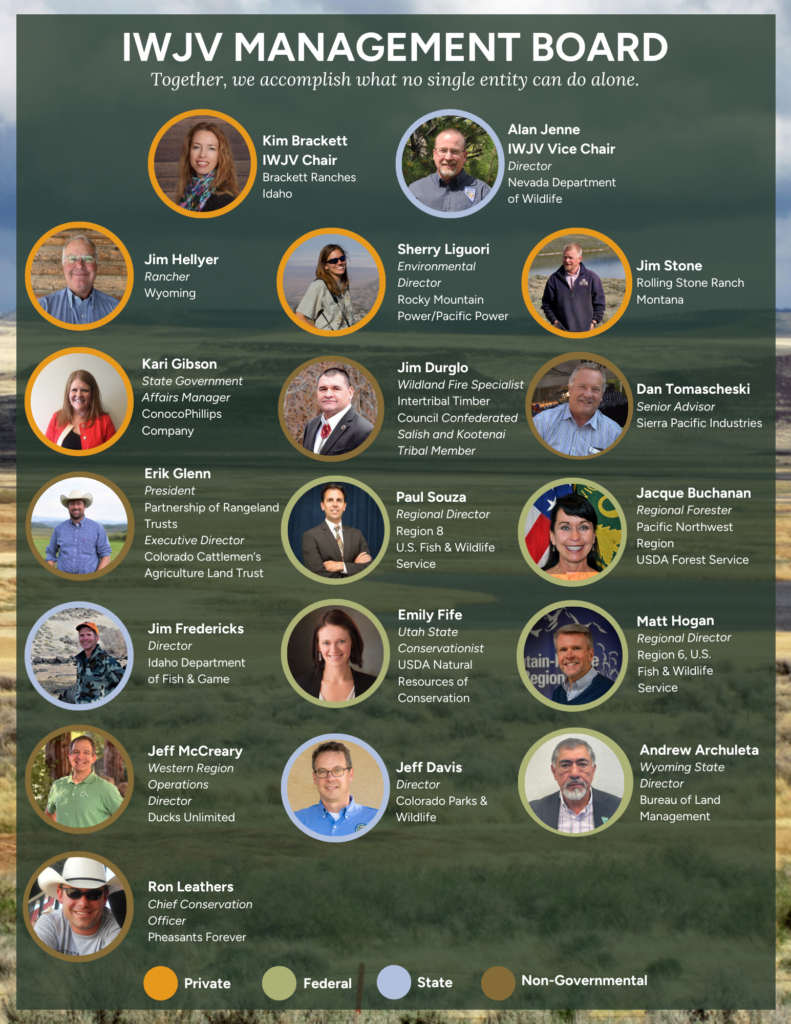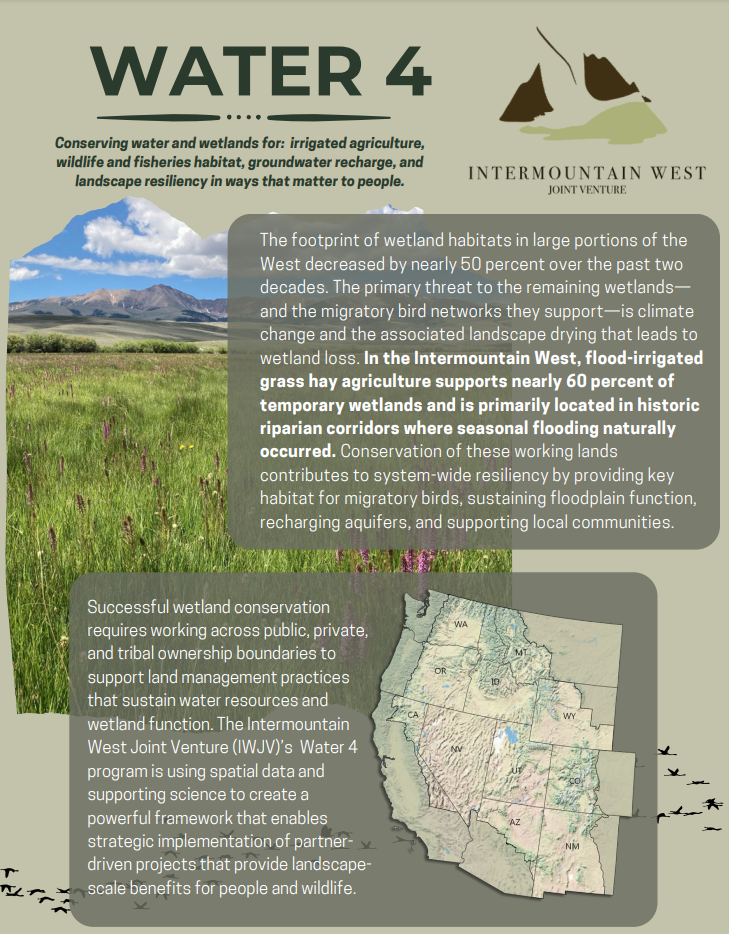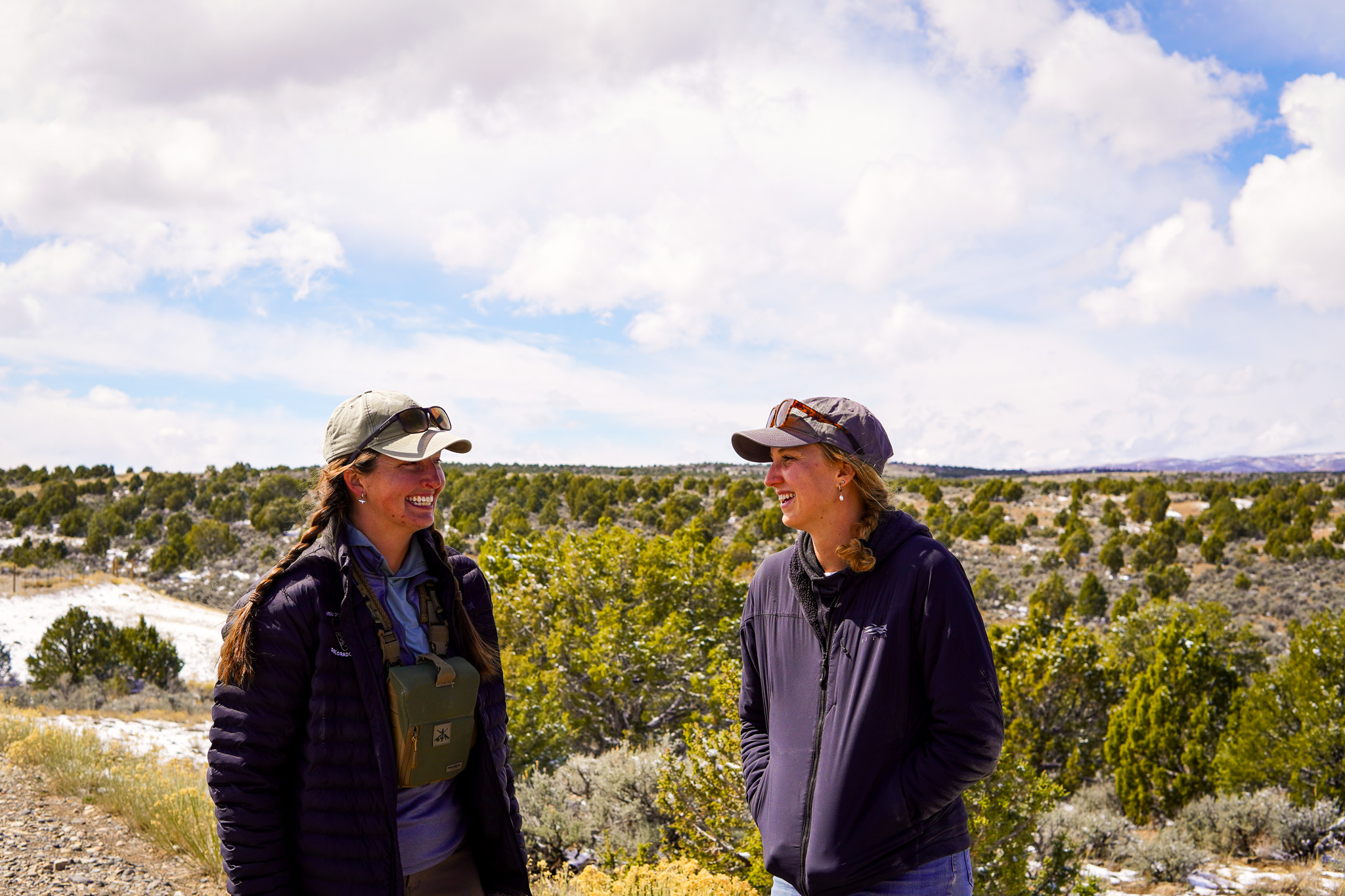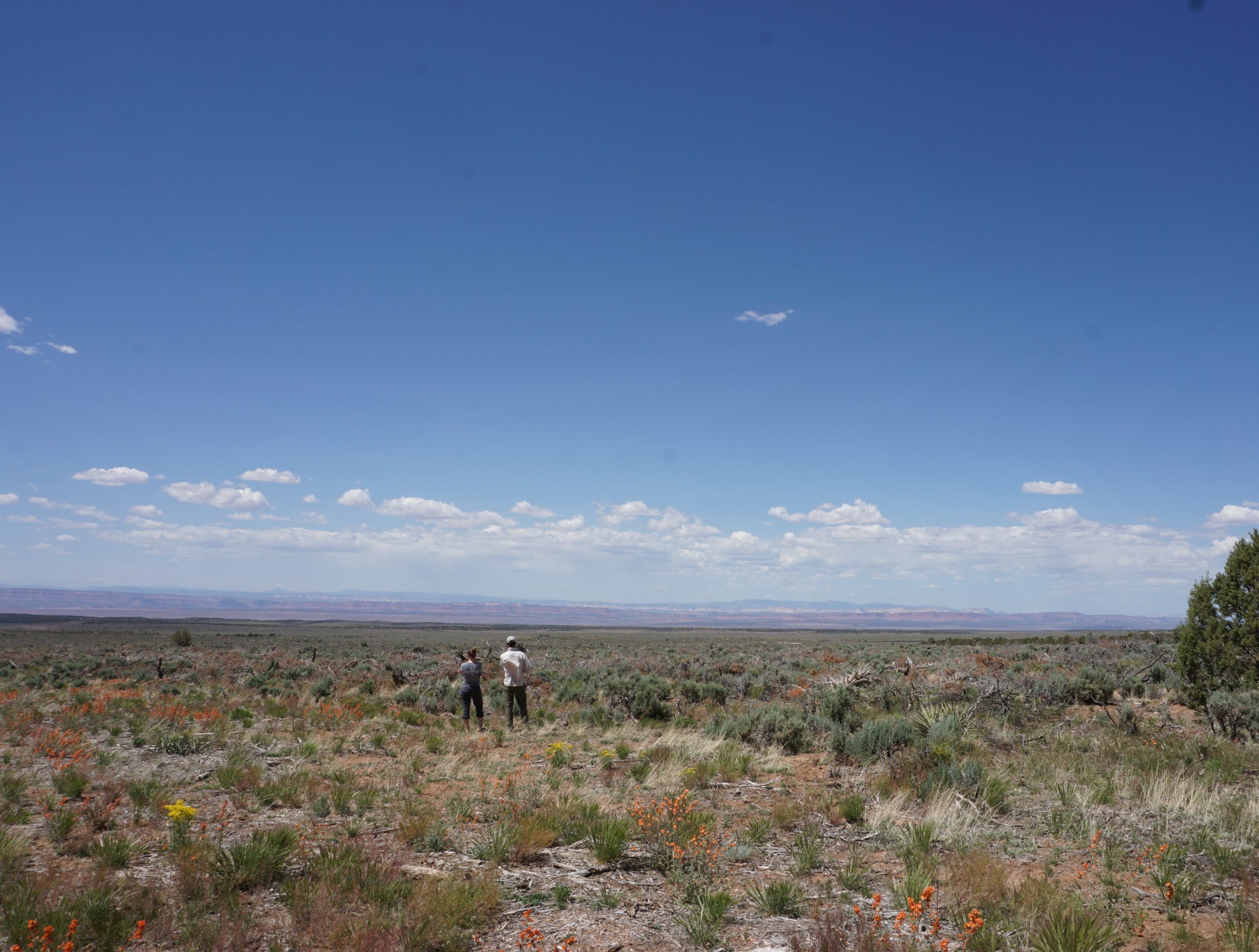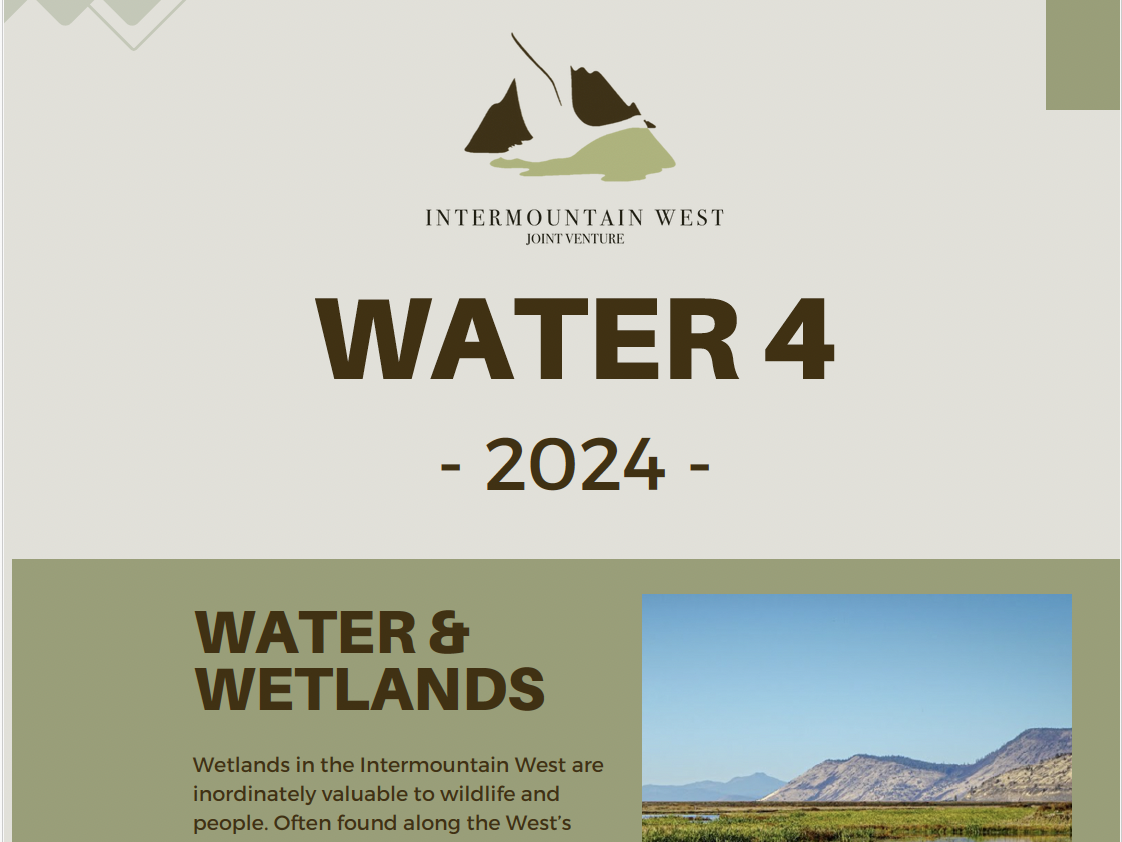The IWJV philosophy can simply be described as a deep recognition that people are fundamental to the story of conservation in the West. People dedicated to working lands, both public and private, compose a huge part of our organizational landscape and are core to our everyday functions. Keystone tenets of the IWJV include finding common ground with others, using science to build durable conservation, and strengthening conservation through a lens of relevancy to people.
The IWJV focuses on wetlands and the waters that support them, sagebrush ecosystems, and forests, habitats that collectively encompass the majority of the Intermountain West and support a multitude of bird species. These habitats need collaborative conservation efforts to address their pressing threats: wetlands are drying; sagebrush ecosystems are being impacted by invasive annual grasses, encroaching conifers, and large-scale wildfires; and forests have degraded structure and function contributing to larger and more severe fires. Our approach to this work will stay consistent: commitment to working lands and the people who steward them, and support of land management practices that sustain bird habitat in a voluntary, non-regulatory manner.
Focus Areas
Water and Wetlands

Wet meadows on irrigated agricultural lands comprise the majority of the managed wetland habitat in snowpack-driven systems of the Intermountain West. These lands provide vital habitat for migratory birds, sustain floodplain function, and recharge aquifers, but are at risk of fragmentation from rural subdivision, competing water demands, and the ongoing landscape-scale changes.
Sagebrush Rangelands
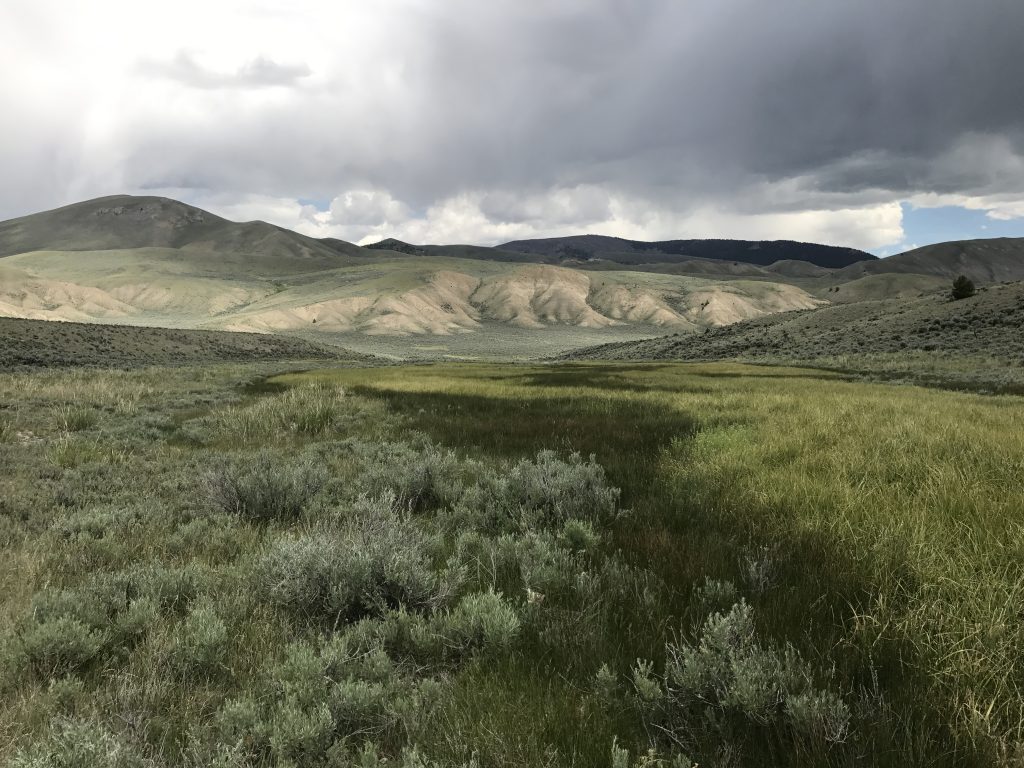
Millions of acres of sagebrush rangelands are vulnerable to catastrophic wildfire, annual invasives like cheatgrass, and conifer encroachment. These threats are the primary drivers of the loss of 1.3 million acres per year of sagebrush rangelands, with consequences to sagebrush obligates like Greater Sage-grouse and myriad ecosystem services.
Western Forests
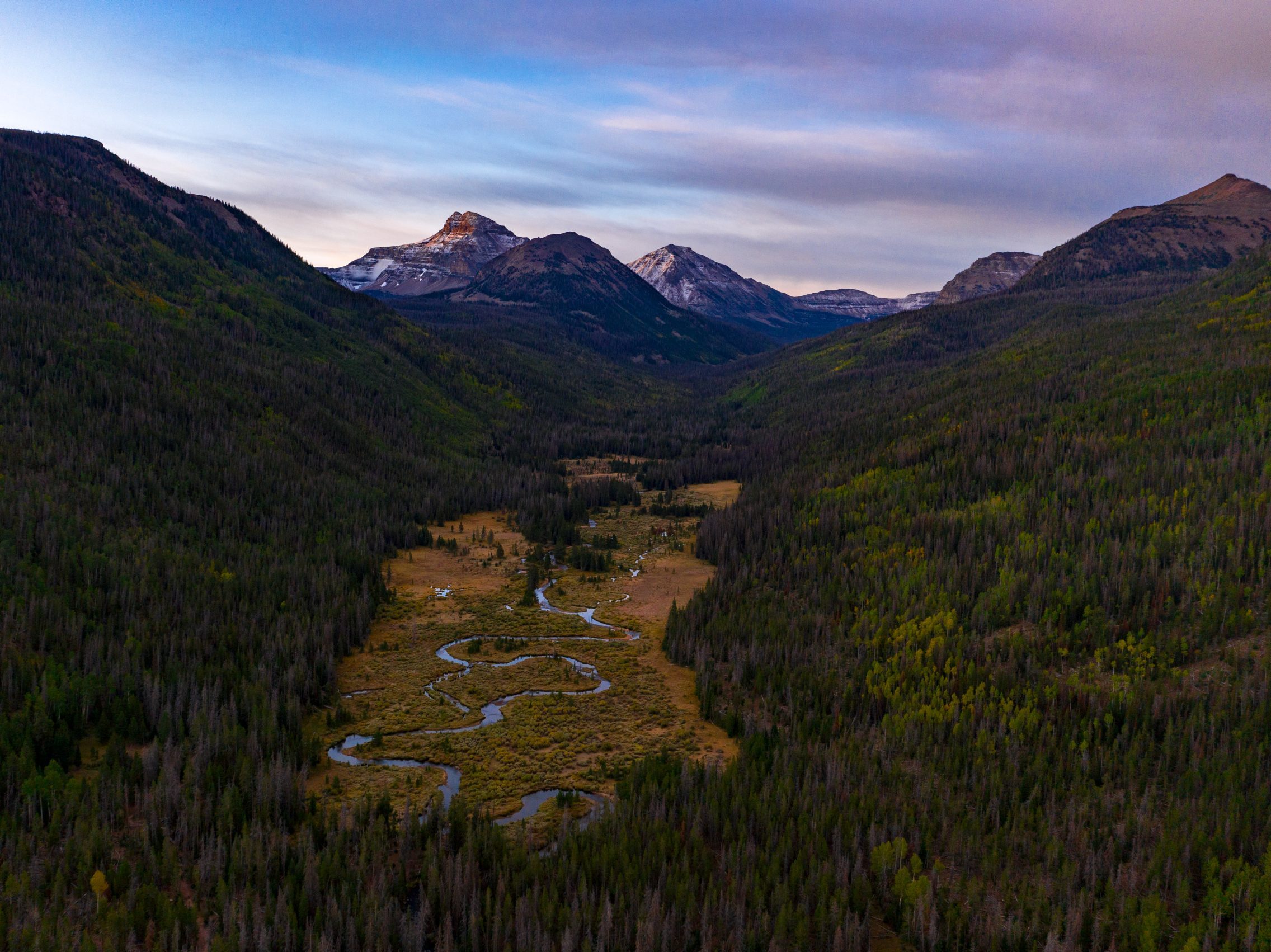
The diverse forests of the Intermountain West range from arid, pinyon-juniper woodlands to moist, mixed conifer forests. They provide wildlife habitat, source much of the majority of the region’s freshwater, and sequester tremendous amounts of carbon. Changes in forest structure due to fire suppression, use patterns, and fire regimes threaten many of the ecosystem services and are contributing to the declines of some forest birds
